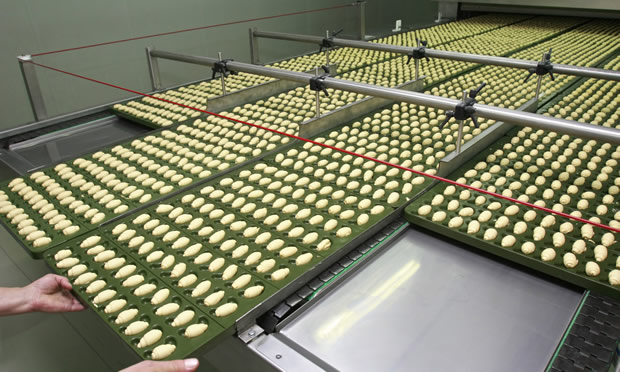What connectivity trends are in the food industry?
Under the ever-growing pressure to reduce costs, the food processing industry are also encouraged to simultaneously boost quality, guarantee food safety, and operate with smaller and smaller batch sizes. Jeremy Shinton of Mitsubishi Electric looks at how trends in connectivity are helping to address these requirements.
Perhaps more than any other sector, the food industry faces the most intense pressures to meet the needs of a fickle market whose preferences can change on a whim. Added into the mix are increasingly demanding legislation, a growing environmental awareness among the public, government-driven campaigns on what should and should not be consumed, and the ever-present requirement to manage food hygiene and food safety.
These demands translate into key strategic themes within the industry, focused on areas such as quality, sustainability, flexibility, resilience, efficiency and safety. Automation has an important role to play in addressing all of these – for example as a means of boosting productivity, eliminating the inconsistencies that inevitably result from manual control adjustments, reducing the costs associated with intensive manual operations, and increasing overall efficiency.
But to push further to address the real challenges within the food sector today, the industry is seeing a greater take up of automation and an increased emphasis on connectivity. Where in the past automation systems within the food industry tended to be disparate – separate islands of control with little or no connectivity – we are now beginning to see fully integrated automation platforms.
Connectivity within automation architectures is part of the equation, typically with open Ethernet standards such as CC-Link IE linking I/O, motion and safety functions on one cable to PLCs and delivering the highest productivity available today. Connectivity from plant PLCs up to higher level systems is another key aspect, enabling business decisions to be seamlessly translated into plant floor operational decisions.

But increasingly trends in connectivity are focused on bringing myriad sensors and field devices into the network. Intelligent sensor networks integrate the likes of fluid sensors, RFID, optoelectronic safety devices, distance and proximity sensors, and bar code scanners, delivering huge amounts of data into the control system and higher level business systems.
This is entering the realm of machine-to-machine (M2M) communications and the Internet of Things (IoT). M2M communications and IoT have been heralded as the biggest revolutions in connectivity, with IoT in particular having been ranked by McKinsey Global Institute as one of the most technologies most likely to drive change into the industry in the years from now all the way up to 2025.
M2M/IoT connectivity within food processing plants is increasingly over Ethernet, as more and more smart devices are developed with their own IP addresses, but it might also come over wireless GSM standards, or it might integrate legacy RS232 or HART devices through Ethernet gateways.
Widely distributed intelligence and remote sensors generating lots of information, linked over open standard protocols, form a digital nervous system within the food plant. This networked digital data can then be combined into bi-directional systems that integrate data, people, processes and systems for better decision making.
We can see, then, that connectivity is one of the most important trends and one of the biggest drivers within the food industry. With improved connectivity through all levels of the information hierarchy, automation systems within the food industry can ensure even more reliable and efficient operation, deliver process agility and flexibility, ensure consistency and quality, and help in meeting regulations and legislation. The net result is improved profit margins.





